Reading the Collections, Week 37: Journal of Alexander Gillespie, 1662-85
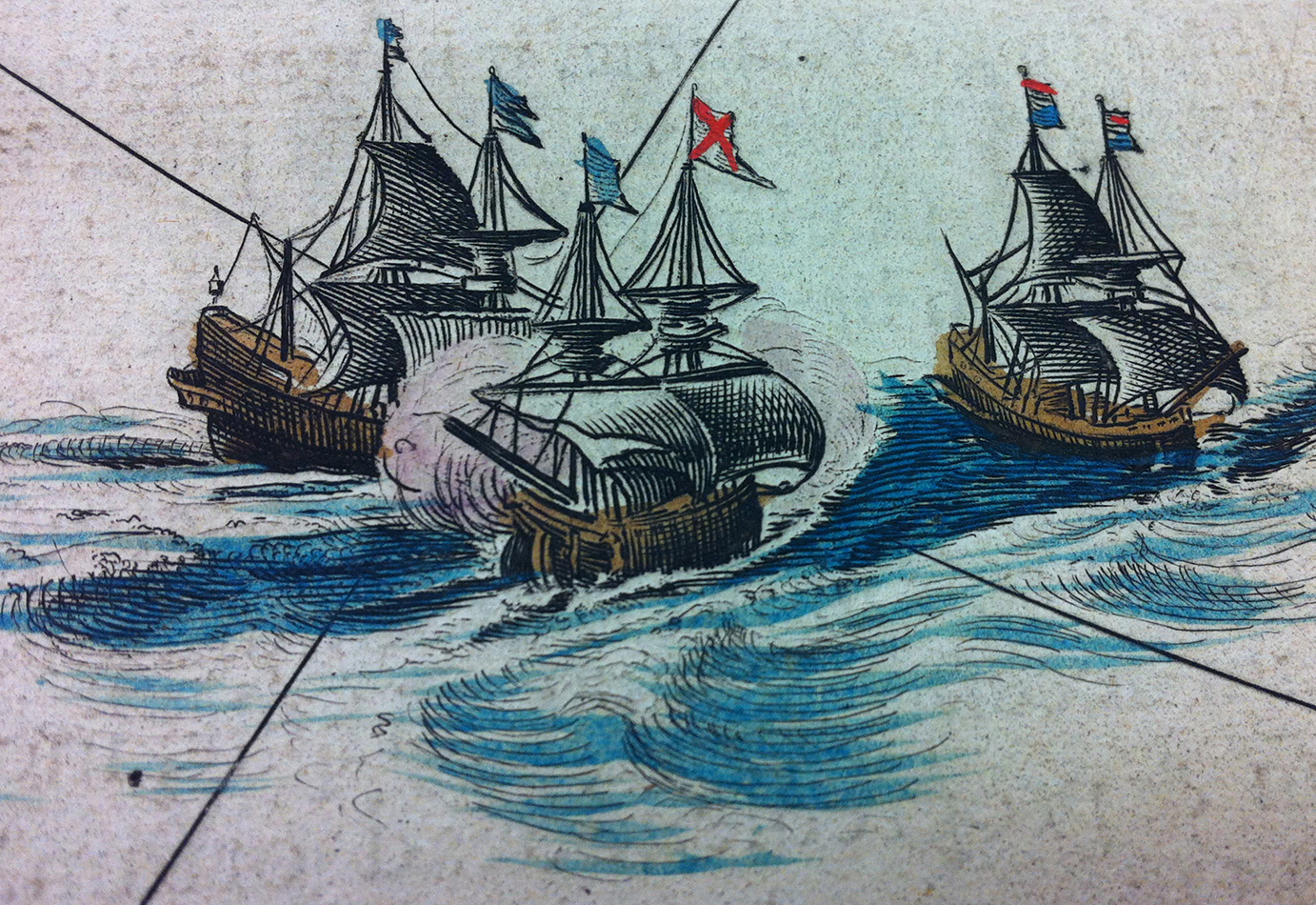
The re-discovery of the sailing journal of Skipper Alexander Gillespie ms38352, who sailed out of Elie in Fife in the mid-17th century, made the news in 2002. At that time Dr Paula Martin had just completed her transcription of the journal. It was hailed as evidence of Fifers being at the forefront of Scottish trade in Europe. Since then the journal has been used in doctoral research (Siobhan Talbott, Conflict, Commerce and Franco-Scottish relations, 1560-1713) and has featured in the Treasures of St Andrews University Library. It is also a core item used every year in the teaching of Scots Palaeography, both at St Andrews and Dundee (through CAIS). In that context I know it well – as a good example of rather eccentric Scots hand with strong Secretary features, and many interesting characteristics, which make it a valuable teaching resource. However, I have never had the opportunity or reason to read through the journal until preparing for this blog post.
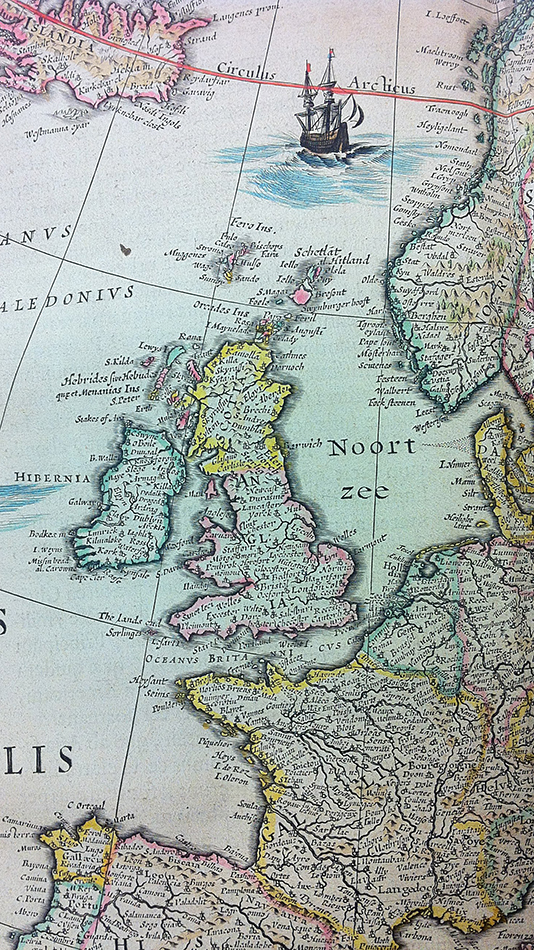
The coverage and content of the mariner’s journal is well described in the catalogue entry which Maia created for the Archives Hub and in the press coverage from 2002. Gillespie sailed to the Baltic each summer for iron, flax, hemp and oaken boards, and often made a double run to Bordeaux to fetch the first vintage in the autumn. He sailed to Norway for timber, and to London and Rotterdam for manufactured goods and luxury items. He routinely carried coal and salt from Scotland. His journal is a workmanlike record of route, cargo and weather, but has a deeper purpose as an aid for navigation, specifically describing various harbours, their hazards, seabeds, landmarks, reefs and depths of water. These would have been added to the observations which had been passed down to him by his seafaring father who died in 1652 (Paula Martin). The description of what can be seen from the deck as features on the land show that they navigated by hills, church steeples, lights and even windmills, but there is also reference to the use of local pilots, such as in the Fjords of Norway in August 1678 (p. 59).
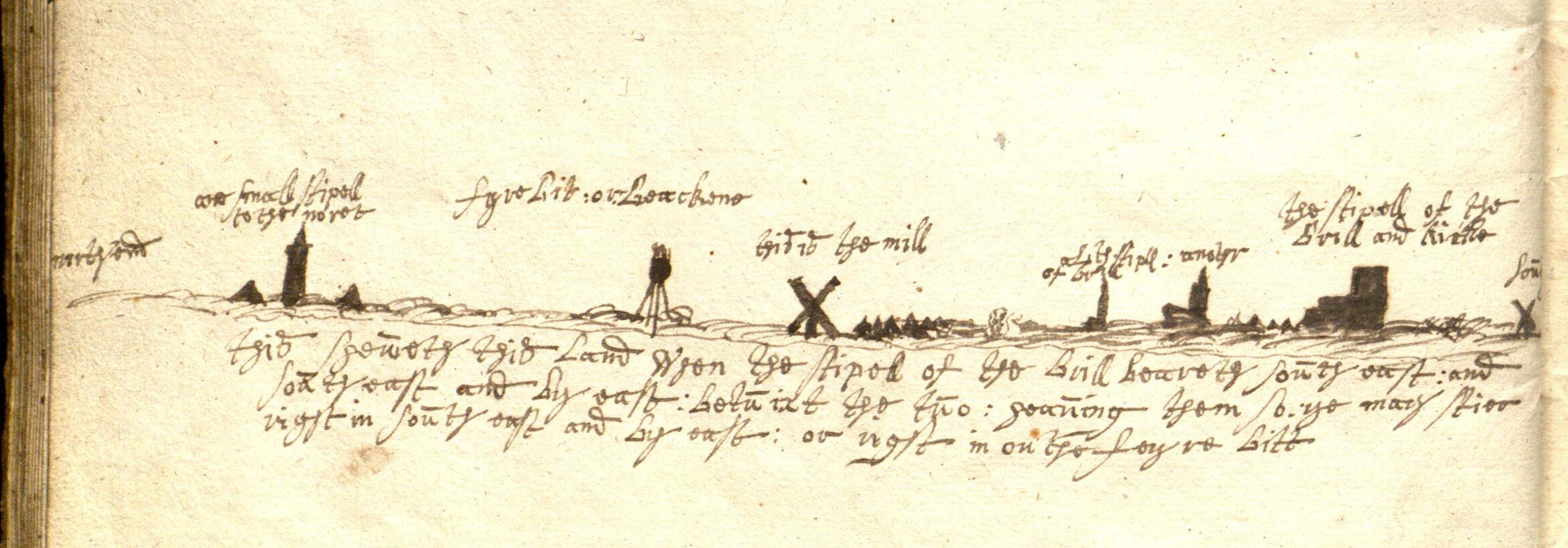
“When Bagie stipell is north weste to nourene of you
then stire south easte souden till ye heave 10: or ii
fadome: then lofe up to stirborde till ye geat
6½ or 7 fadome and that will bring you clire of
the wester rocks: and keeping so alongs: south west
souden and south weste it will bring you to the
bouie of the Gonflite [Gunfleet Sand]” (p. 15)
“Teusday the 4th julie I aryued at Rotterdam
Theursday the 6th julie I agreied with: Pitter Hoogeveene
for the beilding of my ship”. p . 56 (ms38352)
Making 65 voyages over 24 years, Gillespie sailed in The Anna until 1676, described in September that year as ‘verrie lecke [leaky]’, after which he spent 6 months in Rotterdam to supervise the building of The James, the ship with which he made the fortune that allowed him to retire from the sea and live the life of a country gentleman in an estate which he probably inherited through his wife.
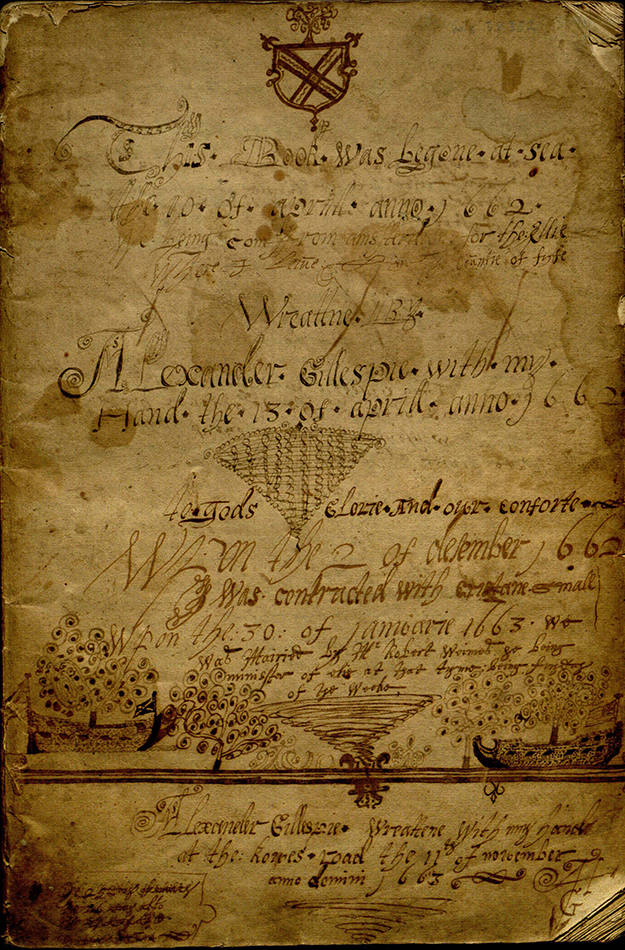
The cover of the journal often poses a challenge to students reading Gillespie’s hand for the first time. He uses the front as a place to record personal information – his origin in ‘the Ellie in the countie of Fyfe’; his being ‘contracted with Cristane Small wpon the 2 of December 1662’ and his being married to her on 30 January 1663 by Mr Robert Weimes, minister of Elie ‘being fryday of the weeke’. His doodled ships sail proudly across the book, one bearing a saltire and the other a flag which seems to resemble an ensign. The soft-backed volume continues to function as a place to record significant family information, with the listing of the births of 5 daughters and two sons between 1665 and 1682.
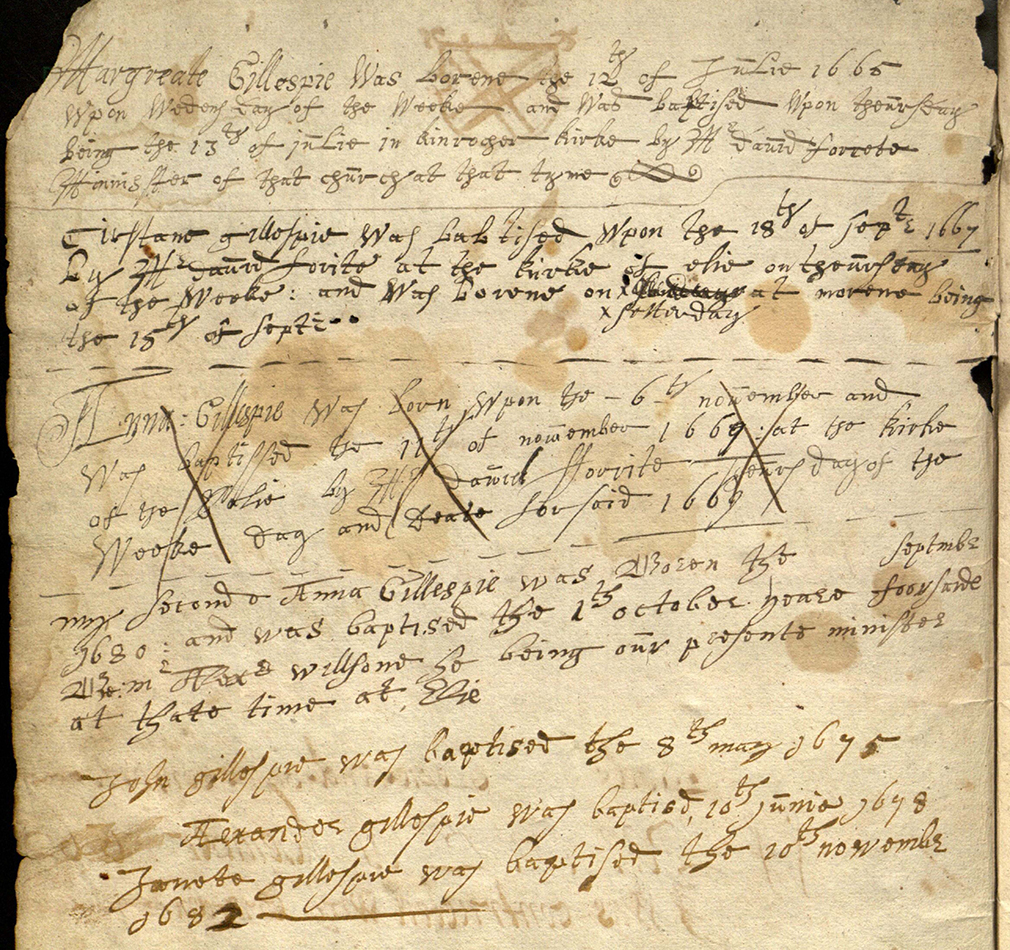
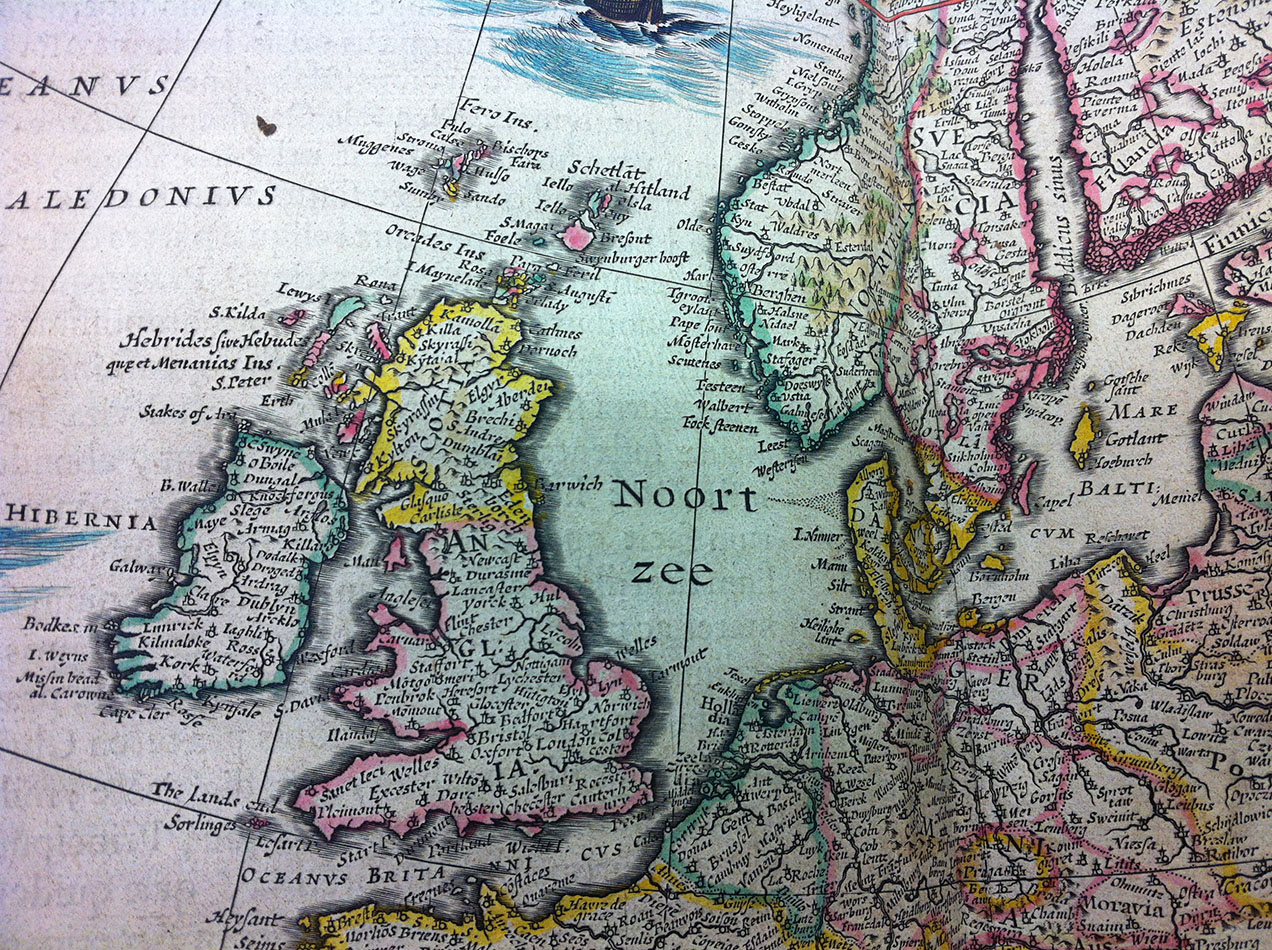
The record begins in April 1662 with a voyage to Zuider Zee in the Netherlands and instructions for entering the Texel, navigating by way of buoys and beacons. Within three months he had sailed from Elie to Holland, the Firth of Tay, Great Yarmouth, back to Dundee and Newburgh, and then back to Yarmouth, then across to Sunnhordland and around Stavanger in Norway, before returning and making landfall at Girdle Ness in Aberdeenshire before returning to Elie. His routine entries hide nights of waiting for the wind to subside before being able to enter harbour, riding out storms and coping with disasters: ‘we heaving ane foull nighte’ (31 Dec 1663); and ‘bloing fresh we waying in the morning brocke our ceabell and lost our anker’ (p.55).
There are rarely references to the proceeds of the sale of the goods he carried, but I did find that on 24 July 1668 Dysart coal sold in London for 20 shillings sterling per ton. From 1669 he notes when he has written letters home. He carried soldiers from Leith to Dieppe in August 1671. In October 1673 he refers to sailing in a convoy of 100 ships with the protection of frigates against the Dutch and later notes: ‘pease with the holander being procleamed at London the 28th of Febriuarie 1674.’
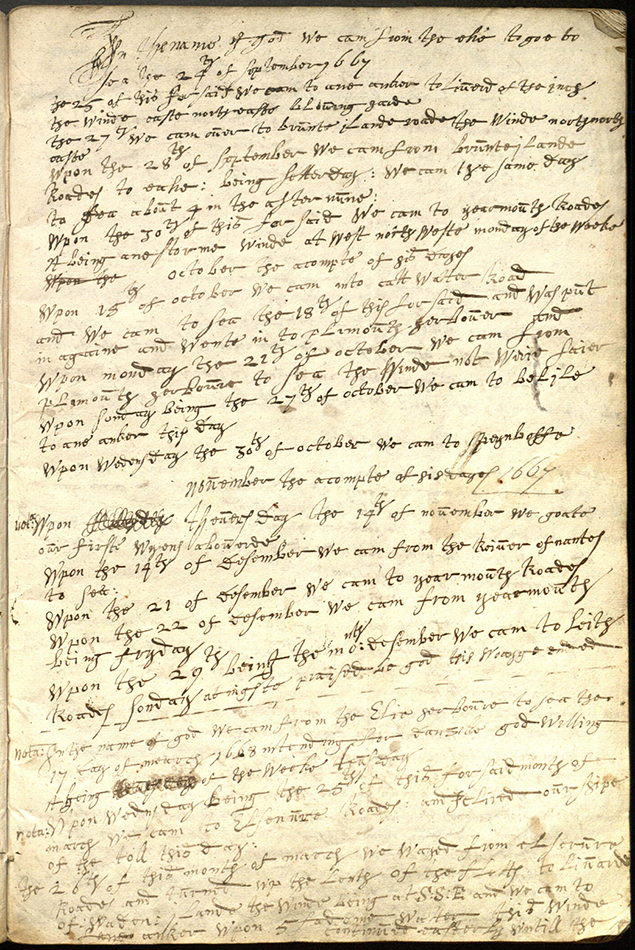
Sometimes it is possible to imagine that the rough sea caused the journal’s lines to wander away from the horizontal. Certainly the skipper’s life was dictated by the tides, and some of the Bordeaux runs were through dreadful weather in the Bay of Biscay. Sometimes the journal reads like the shipping forecast: in September 1674 the Bordeaux run was from Elie, to Tynemouth, Flamborough Head, Cromer, Yarmouth, Holm head, North Foreland, Beachy Head, and the Isle of Wight before heading on down the channel and over to France. On that run he encountered a privateer off Ushant (p. 42):
“Fryday being the 18th September we did meit with ane
Privitier belonging as he said to Oostende
he caused us to put out our boat: and
took away ane hooghead [hogshead] beir [beer] from us”
I am most grateful to Paula and Colin Martin for their work on identifying the places referred to in the journal and for their transcript which is available for consultation in the reading room –unless you are a student who has been set a transcription of part of the diary for assessment!
-RH
